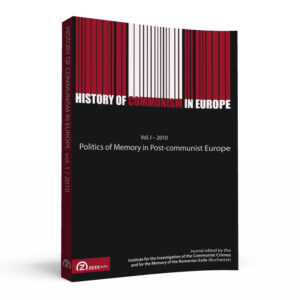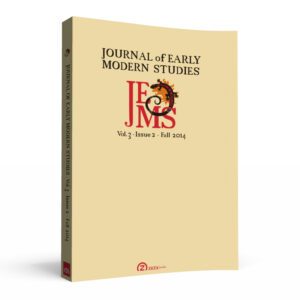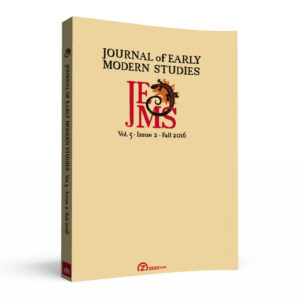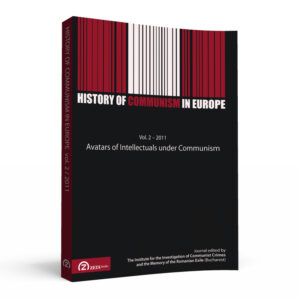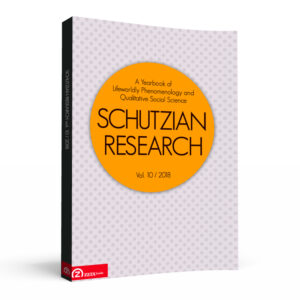CLICK HERE FOR OTHER ISSUES OF THIS JOURNAL
Table of Contents
Abstract: The collapse of communism and the subsequent transition to democracy of the Central and South-East European countries have been characterized by a dynamic approach towards their recent past. In those countries having pursued some legal and extra-legal remedies, ranging from criminal trials and truth commissions to lustrations, parliamentary inquiries, compensations, restitutions or governmental based investigations, the transitional dynamic has been hugely analysed in a tremendous corpus of literature. Such clear „signs” as carried out measures and their nature are on the other hand the sheer evidence of some shaken order and of the attempt on re-establishing the trust. Besides the trauma of the early Stalinist period, all the countries in the region (Romania included) had and still have to deal with “the grey veil of moral ambiguity” (Tony Judt) that was a defining feature of really existing socialism. These societies and most of their members have an uneasy conscience in relation with the past: complicities are often covered by the thick veil of denial, collaborationism is presented as an inevitable choice, and resistance is underestimated.
Abstract: Many distinguished Western intellectuals visited communist (or state socialist) countries (such as the former Soviet Union, China under Mao and Cuba under Castro) during the past century with a highly favourable predisposition and wrote admiring accounts of their experiences. These political pilgrimages demonstrated the capacity of intellectuals for wishful thinking and bizarre political misjudgements. More recently the same underlying attitudes which gave rise to these misjudgements found expression in anti-Americanism and the non-judgmental or sympathetic attitudes towards Islamic radicalism. These misjudgements and the associated illusions compel the revision of widely held conceptions of intellectuals as individuals with highly developed critical faculties capable of distinguishing between appearance and reality.
Abstract: Very few writers have had such an impact on their culture as Alexander Solzhenitsyn on Soviet society in the ‘60s and ‘70s Recently published documents from the KGB archives show the problem he posed to the Soviet leadership—not because he was the only one to point out the massive falsehood and injustice of Soviet society but primarily due to the scathing power of his artistic diagnosis. Many of Solzhenitsyn’s writings in fictional, autobiographical, and publicistic genres can helpfully be understood in terms of Plato’s struggle in the Athens of his day for a “remembering” or anamnesis of what it is to be a human being, a human society, and the cosmos as transparent for divinity. That struggle, even though Plato doesn’t use the word “amnesia”, was against the refusal to remember. The Austrian writer Heimito von Doderer called that refusal the Apperzeptionsverweigerung or refusal to perceive (in his case, regarding National Socialism). Here we’ll explore Solzhenitsyn’s work in terms of his struggle to remember over against the ideological “refusal to perceive” in the three fundamental dimensions of personal, social and historical existence. Solzhenitsyn expands Mikhail Bakhtin’s understanding of “polyphonic” characterization as a key technique for articulating his diagnosis of Soviet totalitarianism. The discussion will instantiate what can be seen as his understanding of personal amnesia and anamnesis in Cancer Ward, his exploration of social amnesia and anamnesis in In the First Circle, and his treatment of historical amnesia and anamnesis in The Red Wheel and The Gulag Archipelago.
Jean-Claude Polet, Histoire, Mémoire et Eschatologie
Abstract: History, as part of the “humanities department”, establishes facts, by way of investigating the sources. However, historians also pass a judgement over the moral attributes of past events. Given that the act of memorialisation is always incomplete, could one envisage an ideal horizon where justice and forgiveness are simultaneously restored? This eschatological perspective would require the reunion of past, present, and future tense. Without future, there is no hope. Without past, there is the risk of amnesia and the danger of minimizing the facts, actions, and responsibilities of the perpetrators against their victims. The present, in its turn, must be made fertile through the practice of recognition and repentance. It is only repentance that breaks through the iron cage of hatred and revenge (“eye for eye, tooth for tooth”). Peace is the event whereby reconciliation is enacted freely, by an appropriation of the past without external compulsion. Seen from an eschatological perspective, history and memory come to serve the common good.
Abstract: Remembering the year of 1989 does not always seem to produce a coherent narrative about the recent history of Romania. Most likely, when asked about their own experiences or what truly happened back then, Romanians would refer to it as “the events” because there still is a certain veil of ambiguity over their shared collective memory. The author’s personal encounters with such story tellers confirm that Romanians are still torn apart between various interpretations concerning what happened during December 1989.
Abstract: This essay opens up the question about museum presentations during the communist rule in Bulgaria that were arranged to materially prove the official state ideology. Their collections should validate the governing party’s pretences for historical continuity. Two museum institutions shall be discussed: “The Museum of Working Class Revolution” and the “Museum of Constructing Socialism”. Both of them are analyzed as a propaganda machine for the dissemination of the party messages from the point of view of visitors’ perceptions of the recent communist past… Such museum presentations, normally part of the regional history museums or having a national status, were born with the regime and lived out some years after its end in 1989 when they were sentenced to “death” or closed behind the repositories’ walls. Two decades after 1989, Bulgaria still doesn’t have a separate museum space for presenting its recent past. In contrast, pre-1989 museum presentations about communism registered extraordinary numbers of visitors that later in the 1990s suddenly disappeared. Are people still interested in supporting official museums’ narratives about communism? This article offers an anthropological analysis of the former visitors’ motivation and memories about the communist presentations 20 years after their close. The research here has tried to provoke memory. It also attempted to find the reasons why people would consciously forget.
Simina Bădică, The Black Hole Paradigm. Exhibiting Communism in Post-Communist Romania
Abstract: In the early 1990s, Romania’s communist past was a subject of heated public and private debate in which the historian’s voice was hardly ever heard. It was the time when metaphorical accounts of the country’s difficult past were more fashionable than serious academic analysis. It was in the 1990s that the 1945-1989 period came to be described as “a black hole” in Romania’s history, as a time when Romanians were “out of history”. My argument is that Romanian exhibitions on communism have taken up this unfortunate metaphor and, although academic accounts of our recent past are currently more nuanced, the practice of exhibiting communism has remained confined to these old-fashioned dichotomies and to what I describe as the black hole paradigm. My article will mainly deal with two important museums, the only ones that had the determination and courage to establish, in the troubled 1990s, permanent exhibitions dealing with the country’s communist past. The Sighet Memorial Museum and the Romanian Peasant Museum are to this day still the only museums that exhibit communism every day from 10 a.m. to 6 p.m. Yet they were constructed in a specific memorial context. The influence of this is visible in the curatorial concept of the exhibitions, in their usage of space and architecture and in the basic argument they strive to convey about the communist past.
Abstract: The Croatian identity politics, especially after winning its independence from the former Yugoslavia, has focused on the self-image as one of the democratic European countries, not of Communist Balkan. The nostalgic stories about the Croatian kingdom and the image of Croatia as European country has been constructed, exhibited and consumed in Croatia today, displacing and eliminating the heritage of Communism era, the tragedy of the independence war, and the history of Yugoslavia. Croatian contemporary artists, in contrast, try to resist this collective “amnesia”. My paper analytically compares the attitude of the national cultural industry with the artistic performance and works by several artists in Croatia, focusing on the three mutually related topics: the concept of “Communist Balkan”, the collective memory of the Yugoslav wars and the view towards the cultural heritage which doesn’t fit to the homogeneous history of Croatia.
Oana Popescu-Sandu, “Something Nice to Remember”. Silence and Memory Between Generations in Two Gulag Films
Abstract: After 1989, several Bulgarian films engaged in the exploration of the communist past, but, as in the Romanian case, the period of exploration did not last very long. Yet the topic of the past did manage to reach a point of saturation. Bulgarian film scholar Dina Iordanova writes that “the gloomy 1950s were recycled ad nauseam […] Before long, the topic of human rights violations and moral compromises of the period was no longer attractive to filmmakers.” (New Bulgarian Cinema 61) Iordanova adds that Bulgarian film, after the early 1990s, turned away from the traumatic past to focus on other problems of identity, in a manner similar to the Russian chernukha genre. (60) My analysis of several Bulgarian films will show, that, like in the Romanian case, the line between productive exploration of the past and the repetition of communist paradigms is very thin. In my analysis of the Bulgarian film I focus less on the mechanisms of the confession proper and what it reveals about the past, and more on the way the past and the present live together within the same body and the even same film frame. I will look at the crippling effect of the past on the present, at the effect the unresolved life of parents has on children. Lilly’s confession to her son in Canary Season is not cathartic but deadly; Ţandără’s son is crippled, both physically (as he suffers from liver disease) and mentally. Canary Season (like The Afternoon of a Torturer), shows how the confession of parents does not help children and does not enlighten and unburden the present. The confession is sabotaged, delayed, undervalued or simply comes too late. The life of the children is meaningless and joyless unless they decide to escape the perpetual return of the dead and to the dead that is sometimes advocated by the older generations.
Abstract: During the communist regimes art was both a reflection of the political (politicized art), a critical reflection and partially at least a replacer of politics. At the moment of transition to democracy the watchwords seem to be: concord, consensus, forget the past, look to the future, build the future, and so on. Paradoxically enough, once the process of democratic consolidation is set in place, the societies – that seem/desire to have been created at the exact moment when the regimes change their names from dictatorship to democracy – begin to look to the past. Romanian post-communism has thus also seen slowly the desire to recuperate a lost past and it is only in the years 2000 that what I call “art of memorialization” is seen developing. The reclamation and reinterpretation of past symbols and the evocation of the previous period as a means of healing still present wounds is seen in different artistic supports and is somehow situated between legacy and nostalgia. The question I address is: What and how do we artistically remember? Are there patterns, symbols, common elements that appear in artistic discourses; how are these perceived by the public, what is their impact. Thus, I explore the question of artistic invocation of the past – as a means of construction of an artistic memory (art of memorialization). For that I shall address the discourses of Romanian visual artists (Vlad Nancă, Dumitru Gorzo, Dan Perjovschi) and the most important films part of what is called the “Romanian Nouvelle Vague” and which include: 12:08 East of Bucharest (Corneliu Porumboiu, 2006), The paper will be blue (Radu Muntean, 2006), How I spent the end of the world (Cătălin Mitulescu, 2006), Tales from the Golden Age (Cristian Mungiu, 2009). Although taken as a corpus, these films have quite different standing points on the communist period. I will also compare this recent new wave of Romanian cinema to the earlier look of Romanian cinema onto reality, the cinema of the early 1990s. Moreover I intend to take into account official attempts to artistically memorialize: public monuments, statues, public places and parks, museums and discuss the “why” of the absence of a Museum of communism in Romania.
Abstract: Drawing on Foucault’s analyses of the legal category of “monstrosity” the paper’s focus is the way in which socialism as part of Bulgarian history was largely constructed as a “monster”. It appears that the key characteristics of the latter could be found in the ways we handle this period of history and collective memory. I argue that the concept of “monster” provides a useful entry point for considering the entity “communism”, constructed after 1989 through different representational strategies and practices of assessment. It is revealing to observe some of the typical representational practices, performed during the transition, as practices raising a kind of historical or temporal monster. The paper consists of two parts. The first one elaborates the conceptual network of the discourse of monstrosity and its key features. The monster represents the transgression of natural limits, it appears only when confusion comes up, for the monster combines the impossible and the forbidden. It is the casuistry that is introduced into law by the confusion of nature. The second part draws on these features and conveys them in the thinking of history, practices of historical representation, the strategies of shaping the collective past and memory.
Abstract: Almost fifteen years after the breakdown of the Iron Curtain, citizens in five of the best performing post-communist countries display willingness to return to the previous regime, share values convergent with communism, and high levels of dissatisfaction with democracy. Using a two-step statistical analysis, this article investigates at individual level whether citizens attach attitudinal and behavioral consistency to their opinions towards the past. The results indicate that people supporting communist policies are more likely to pursue the return to such a regime compared to their fellow nationals; citizens’ regret for the previous regime is not based on the ideological or policy features; and dissatisfaction with democracy has little to do if anything with the nostalgia for the communist past.
Abstract: The paper critically examines three main sets of narratives regarding the memory of the communist past and generally, three images of Yugoslavia that have been generated in today’s Macedonia. The narrative of continuity is centered around the embeddedness of Yugoslav communist past in the contemporary Macedonian context, marked with the idea of “uninterruptedness beyond interruptions”, caused by the lack of a sudden and clear-cut regime change. The nostalgic narratives are the ones that take in account the importance of the political transition, yet they are focused on the idealized image of the Yugoslav past. The third approach towards the Yugoslav past is the revisionist-victimizing one, which confronts the mainstream image of Yugoslavia as a benevolent hegemon, sees communism as a dark chapter of Macedonian history and is dedicated to delegitimizing its remnants today.
Abstract: Albania represents perhaps the most extreme case of isolation and governmental oppression under communist dictatorship in Southeastern Europe. Not surprisingly, the violence of transition in Albania both reflects and in significant ways differs from the violence of transition in other Southeastern European countries. It’s relation to the former Yugoslavia, for example – where the Ethnic Albanian populations in Kosova and Macedonia complicate a politics of memory and national identity – both imbricates and distances Albania from the Balkan wars. As a pivotal point in networks moving goods and people throughout the Balkans in the 90s and as a host country for refugee populations, Albania is intimately tied to the material conditions of the wars accompanying transition in the Balkans. Paradoxically, the fact that, within Albania, people do not follow the identity schisms mobilized in the wars remains a source of national pride. This paradox points to a complex nexus of issues surrounding individual and collective memory in post-communist Albania: on the one hand, Albanians retain a strong national identity that is fiercely proud and patriotic, and, on the other, this identity is fragmented, marked by internal conflicts, experienced episodically, lacking an organic structure for integrating experience into sustainable narratives through which the past can be remembered or the future imagined. These two paradoxes – of the fragmentation of memory and identity that nevertheless has a nationalistic unifying core, and of the violence of transition which contextualizes memories of the past and imaginaries for the future – frame the investigation of memory and identity in this paper. For our analysis, we draw on interviews with two age cohorts: women who were working adults with families under the Hoxha regime, and women who were in or about to enter college when the government collapsed. Following Pierre Bourdieu’s analysis of the body as a site of incorporated history and Iwona Irwin-Zarecka’s delineation of the infrastructure of memory, we are especially interested in understanding how unarticulated, unanalyzed, and unresolved memory contests are manifesting in the culture and politics of transition. Our questions include: How are private memories retained in the face of state violence, and what are the limits of representation in a memory project that seeks to open the discursive space for articulating experiences that have remained unarticulated? Given the un-representability of deep memory (Friedlander), how do memory projects generate memory scaffolds that can bring the past into productive relation to the work of mapping a future? What are the processes through which fractured and fragmented (unarticulated) (oppressive) narratives and constructions of the past are integrated, or, at least, put into productive relation? This investigation of memory and identity is in the interests of understanding the “socially instituted limits of the ways of speaking, thinking, and acting” constraining Albanians working through this historical moment, and, through this understanding, to offer reflections of use to others similarly situated as they engage in the work imagining trajectories into the future.
Abstract: There is no doubt about the particular importance of the revolution of 1989 in the present German memory culture. The historical research is reaching an agreement on the question concerning the various factors bringing birth to the East-German uprising 20 years after this incident: the economical crisis, the mass emigration, the civil right movement, the mass protest movement, the reform movement in the grass roots of the SED and the strict refusal of any reforms in the SED leadership. But there are still controversial debates about the historical evaluation of the separate factors. Especially the actual role of the civil rights movement is considered an open-ended question. In this context former civil rights activists are arguing against its marginalisation and the national narrative of “1989”, which is dominated by the German unification. The article will focus on the present themes and forms of memory of the East-German revolution of 1989.
Abstract: In this article I examine three separate landmarks of Estonia’s contemporary “historical culture” that are allexamples of the continuous reinterpretation of historical facts that has taken place since the society underwent political reframing; namely 1) the work of the “Estonian Occupation Museum”; 2) the “Estonian International Commission for the Investigation of Crimes against Humanity”; and 3) the conflict over memorial monuments to different veteran groups in Estonia. All these cases concern public ways of dealing with the enduring ambiguities of Estonia’s recent past; particularly with the controversial issues of indigenous collaboration and complicity with the Soviet regime and the Nazi occupiers, as well as with traumatic memories of the war and post-war years. Within the realm of “memory politics” they represent attempts at agreeing on a codification of how to officially remember Estonia’s past. In the background of my discussion stands the question of what makes them instances of “historical revisionism”. To scrutinize this question, I consider “historical revisionism” in relation to five different “public uses” of history, namely the moral, ideological, political, existential, and emblematic dimension of history.
ISSN: 2069-3206 (electronic)
ISBN: 978-973-1997-86-5 (ebook)


